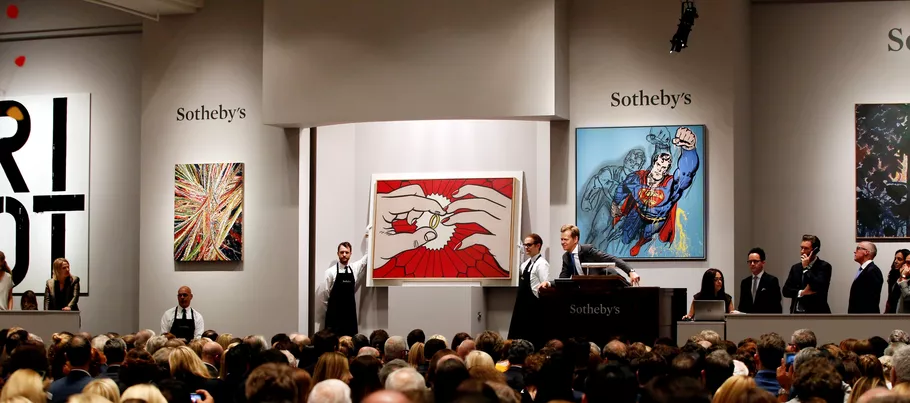In the world of luxury, few experiences rival the excitement, prestige, and intrigue of a high-end auction. The auction house is where some of the world’s most valuable and rare objects change hands, where art, antiques, and memorabilia fetch astronomical prices, and where collectors—often the ultra-wealthy—compete for items that embody both cultural significance and financial value. But what is it that makes these auctions so alluring? How do some pieces command record prices, and what does it take to navigate the high-stakes world of luxury auctions? In this article, we’ll explore these questions and delve into the auction houses, record-breaking sales, celebrity collectors, and insider tips that define this fascinating and exclusive world.
The Allure of Luxury Auctions and the High-Profile Buyers Who Attend
Luxury auctions are not just sales—they are events. They draw in collectors, investors, celebrities, and cultural icons eager to own rare and historically significant objects. The allure of these auctions lies in the unique blend of wealth, history, exclusivity, and competition that surrounds each sale.
For many, participating in a high-end auction is a chance to own something truly extraordinary—an object that tells a story, embodies luxury, or represents an era of artistic brilliance. From priceless paintings by Renaissance masters to one-of-a-kind antiques and vintage collectibles, these auctions present the opportunity to acquire not just material wealth, but cultural capital as well.
The buyers who attend these auctions are often seasoned collectors, art connoisseurs, or ultra-wealthy individuals who view these sales not only as investments but as a means to enhance their personal collections, elevate their status, or solidify their legacy. Many buyers are also motivated by the prestige of owning rare and historically significant works, whether for personal enjoyment, the enhancement of their cultural portfolios, or even as assets to pass on to future generations.
Top Auction Houses: Christie’s, Sotheby’s, and Bonhams—Where the World’s Rarest Pieces Go Under the Hammer
When it comes to luxury auctions, Christie’s, Sotheby’s, and Bonhams are the titans of the industry. These auction houses have been around for centuries and are where some of the world’s most expensive and exclusive items are sold. They have long been synonymous with luxury, wealth, and historical significance.
1. Christie’s
Founded in 1766, Christie’s is one of the world’s oldest and most renowned auction houses. Known for its prestigious sales of fine art, rare antiques, jewelry, and collectibles, Christie’s holds auctions in major cities worldwide, including New York, London, Hong Kong, and Paris. The auction house is renowned for its high-profile sales, with pieces ranging from iconic paintings by Picasso and Monet to world-class jewelry collections. Christie’s is often at the forefront of record-breaking sales, with its auctions attracting some of the wealthiest individuals on the planet.
2. Sotheby’s
Founded in 1744, Sotheby’s is another iconic auction house with a global reputation for selling rare and valuable items. It specializes in fine art, luxury items, rare books, automobiles, and even wine. Sotheby’s holds some of the most sought-after auctions, particularly in the realm of contemporary art and antique masterpieces. Like Christie’s, Sotheby’s has set multiple records for art sales, and its auctions are known for attracting a high-profile clientele eager to acquire exclusive works.
3. Bonhams
Bonhams, founded in 1793, is the third major auction house in the luxury space. While it may not have the same historical prestige as Christie’s or Sotheby’s, Bonhams has carved out a reputation for its focus on fine art, antiques, jewelry, and rare automobiles. The auction house is particularly well-known for offering a wide range of collectible items, including vintage cars and watches, as well as art by Old Masters, Impressionists, and contemporary artists.
These auction houses are the ultimate destinations for luxury buyers, and each year they host a range of sales that attract bidders from around the world. With their deep expertise, vast networks of collectors, and ability to facilitate record-breaking deals, they provide the ideal platform for the world’s rarest pieces to be sold to the highest bidder.
Record-Breaking Sales: The Art, Antiques, and Memorabilia That Fetch Millions
At the heart of the luxury auction world are the record-breaking sales—the pieces that go for millions, sometimes even tens of millions, of dollars. These sales are often the result of a combination of rarity, historical significance, and demand. A single item can fetch such a high price because it is considered a once-in-a-lifetime acquisition, or because it holds cultural or artistic value that transcends its material worth.
Here are a few examples of some of the world’s most famous and record-breaking auction sales:
1. Salvator Mundi by Leonardo da Vinci
In November 2017, Salvator Mundi, a painting attributed to Leonardo da Vinci, was sold at Christie’s for a staggering $450.3 million, making it the most expensive artwork ever sold at auction. The painting’s sale garnered worldwide attention not only because of its astronomical price tag but also because of the intrigue surrounding its provenance and authenticity. This sale demonstrated how high-profile auctions can propel works of art into the cultural spotlight, and set a new benchmark for the art world.
2. The Pink Star Diamond
In 2017, the Pink Star Diamond, a 59.60-carat pink diamond, was sold at Sotheby’s for a record $71.2 million. This sale broke the previous record for the most expensive diamond ever sold at auction. The rarity and extraordinary size of the diamond, combined with its flawless condition and unique color, made it highly desirable among wealthy collectors. The Pink Star’s sale reflected how luxury goods like rare gemstones can command astronomical prices, particularly when they are of unmatched quality.
3. 1962 Ferrari 250 GTO
In 2018, a 1962 Ferrari 250 GTO was sold at RM Sotheby’s for $48.4 million, breaking the record for the most expensive car ever sold at auction. This iconic vintage car, known for its rarity and beauty, is part of a limited production series, making it highly sought after by collectors and automotive enthusiasts alike. The record-breaking sale further underscores the massive demand for high-end automobiles in the luxury auction world.
These sales showcase the extreme levels of wealth and competition that exist in the auction world. The buyers of these record-breaking pieces are often collectors who view these items not just as investments but as cultural artifacts that represent a unique slice of history.

Celebrity Collectors: High-Profile Figures Who Drive Auction Trends
Celebrity collectors play a significant role in shaping auction trends. Their influence extends beyond the items they purchase—these high-profile figures often drive up the prices of rare and valuable pieces simply through their involvement. Celebrities bring attention, demand, and excitement to auctions, which in turn can create bidding wars and record-breaking sales.
1. Leonardo DiCaprio
Actor Leonardo DiCaprio is known not only for his work in Hollywood but also for his extensive art collection. DiCaprio has purchased several high-profile pieces at auction, including works by Pablo Picasso and Jean-Michel Basquiat. His interest in art is driven by both personal passion and investment considerations, and his purchases have helped elevate the value of works by contemporary artists.
2. Rihanna
Rihanna, the global music icon, has also made headlines for her art collection. In 2018, she purchased a piece by contemporary artist David Hammons at a Sotheby’s auction for $2.9 million. Rihanna’s involvement in the auction world highlights how modern celebrities are increasingly becoming influential figures in the art world, setting trends and boosting the visibility of emerging artists.
3. Jay-Z and Beyoncé
The power couple Jay-Z and Beyoncé are known for their investments in both music and art. Their art collection includes works by major artists like Jean-Michel Basquiat, Damien Hirst, and Kehinde Wiley. Their involvement in art auctions not only elevates the works of these artists but also drives interest in the growing trend of art collecting among millennials.
Celebrities have become some of the most influential figures in the luxury auction world. Their involvement and acquisitions often signal new trends, and their purchases can have a lasting impact on the market.
How to Navigate the Luxury Auction World: What Buyers and Collectors Need to Know
Navigating the world of luxury auctions requires knowledge, strategy, and preparation. For buyers and collectors, it’s essential to understand the process, know the market trends, and work with trusted advisors to ensure that their investments are sound.
1. Research is Key
Before entering an auction, prospective buyers should thoroughly research the pieces they’re interested in. This means understanding the provenance, condition, and historical significance of the item. Auction houses often provide detailed catalogs and condition reports that offer valuable information about the item’s background.
2. Setting a Budget
Luxury auctions can be high-stakes affairs, and bidding wars can quickly escalate prices. It’s essential to set a clear budget ahead of time and be disciplined about sticking to it. Buyers should also factor in the auction house’s commission fees, which typically range from 5% to 20% of the sale price.
3. Building Relationships with Auction Houses
For serious collectors, building a relationship with the auction house is essential. Auction houses can offer insider knowledge, private viewings, and access to high-profile sales. They also play a crucial role in understanding the current market trends and advising clients on the best purchases.
Conclusion: Why Auctions Remain a Cultural Benchmark for
Wealth, Taste, and Heritage
Luxury auctions are more than just venues for buying and selling—they are cultural events that reflect the wealth, taste, and heritage of the world’s elite. The items that go under the hammer are not just objects—they are pieces of history, culture, and artistry that hold value far beyond their material worth. From record-breaking art sales to rare antiques and celebrity-driven trends, these auctions continue to be a fascinating intersection of commerce, culture, and wealth.
As the luxury auction world evolves, it remains a benchmark for showcasing the highest levels of taste, prestige, and exclusivity. For collectors and investors alike, participating in these auctions is not just about acquiring rare items—it’s about being part of a global tradition that spans centuries and captures the essence of luxury in its purest form.
















































